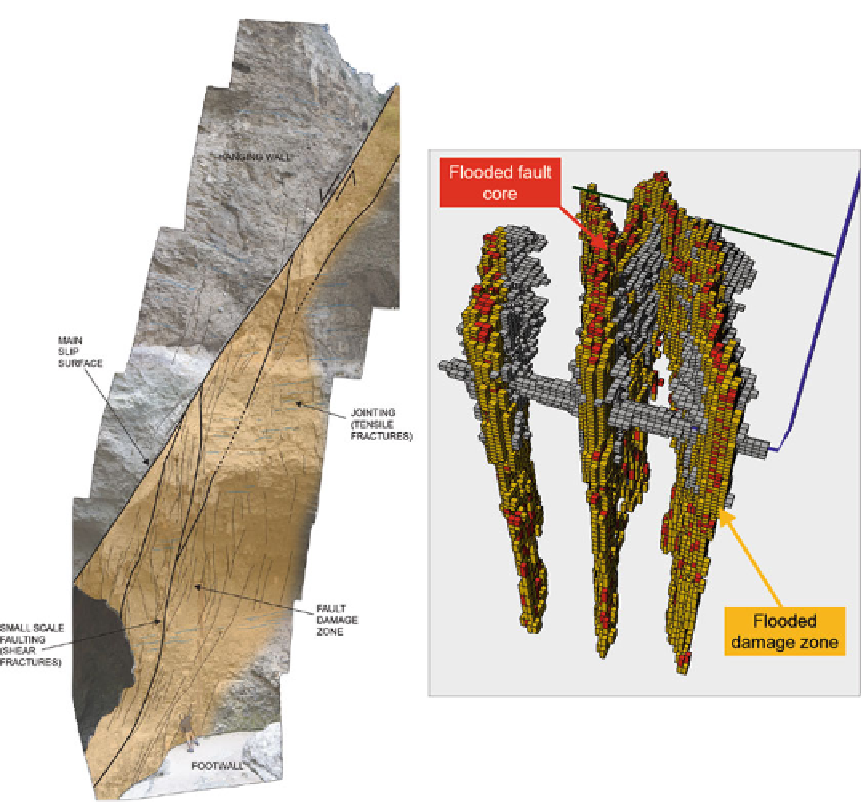Geoscience Reference
In-Depth Information
Fig. 6.39
Karstified natural fracture system from the
Fontaine du Vaucluse, Provence, France:
left:
outcrop at
the abyss;
right
: simulation of a waterflood across the
fracture/matrix network,
horizontal
producer in
green
; open fractures in the flooded fault
damage zone dominate flow, which diverts along only
the highest permeability matrix (colours represent injec-
tion water saturation,
red ¼
high)
injector
in
blue
,
greater extent than their more argillaceous, clastic
counterparts. Near-surface dissolution processes in
carbonate rocks, which result in karst topography
and related weathering structures, are another key
factor for modelling carbonate reservoirs.
Fractured reservoirs are discussed separately
below, and it suffices to say here that in the absence
of information to the contrary it is wise to assume
some degree of natural fracturing in
any
carbonate
reservoir. As carbonates typically have little argilla-
ceous content, these fractures are more likely to
remain open than they are in clastic reservoirs.
Figure
6.39
shows a spectacular modern
example of a karstified fracture system,
which the 'matrix' fabric plays a secondary
role. The simulation model of the system
captures the dominance of the fracture network
for a waterflood scenario, with high permeability
matrix
rock
fabrics
providing
secondary
shortcuts for the flood front.
6.6.5 Hierarchies of Scale - The
Carbonate REV
A starting point for the characterisation of a carbon-
ate reservoir for reservoir modelling is therefore to
view the depositional architecture, the diagenesis
in

